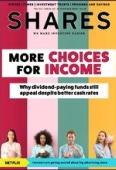Archived article
Please note that tax, investment, pension and ISA rules can change and the information and any views contained in this article may now be inaccurate.
Just how safe is your pension amid the current turmoil?

You’d be hard pressed not to pick up a paper without reading about turmoil in pensions at the moment, whether it’s the Bank of England having to bail out final salary schemes, or the state pension triple lock being under threat.
The negative headlines have naturally caused people to question how safe their own pensions are, and whether they might be in the firing line. No retirement plan or investment is entirely without any risk, but when it comes to pensions, a lot depends on what kind of scheme you have,
WHICH TYPE OF PENSION IS SAFER?
There are two main types of private pension in the UK. Defined benefits schemes, of which final salary schemes are a subset, are still prevalent in the public sector. They have largely died out in the private sector, but many people still have entitlements built up, even where these schemes have been closed to new contributions. Then there are defined contribution pensions, which include personal pensions, stakeholders, SIPPs, and occupational defined contribution schemes. Each type has different risks attached.
Defined benefit schemes were at the centre of the recent intervention by the Bank of England. Nonetheless these schemes are known as gold-plated for a reason. That’s because members are basically guaranteed an income for life when they hit retirement. These schemes have run into trouble recently because of their exposure to government bonds, and the Bank of England had to step in to help. But even if they hadn’t, there are a number of protections in place that would have shielded members from losing their pensions.
HOW PENSIONS ARE PROTECTED
The first is that each one of these schemes holds a pot of assets to pay off members. Most schemes are in surplus, which means they have more than enough money to pay pensions, so they can afford some losses. Even in a situation where they fall into deficit, that doesn’t affect members’ pensions, because the pension trustees can then ask the employer who set up the scheme to pay more money in.
The problem comes if the employer goes bust. But even then, the scheme would fall into the Pension Protection Fund, which is an industry-wide compensation scheme that pays benefits to members of failed schemes at, or close to, what they were promised. So, there are lots of barricades in place between defined benefit pension members and the risks of the market.
The same is not the case with defined contribution schemes. These are now the predominant form of pension saving in the UK. Here, your pension is invested in the market, and is therefore subject to the ups and downs of share prices.
AT THE MERCY OF THE MARKET
Over the long term, the ups should prevail, and provide you with a positive real return on your money. But clearly members of these schemes face investment risk, which can be mitigated to a certain extent through balanced and sound investment selection. For pension savers who are decades away from retirement though, risk is really a friend rather than a foe, because it should be associated with higher long run returns, even if there are ups and downs along the way.
Unlike defined benefit schemes, members of defined contribution schemes are also subject to longevity risk. That’s the risk of people living longer, or indeed of the individual in question living a long life. If a defined benefit member lives to 110, the scheme keeps paying them until they die. But if you hit 100 as a defined contribution scheme member, you could find yourself running out of money if you haven’t provisioned adequately. You can buy an annuity with your defined contribution pension. which will also pay out income until you die, but you are subject to the annuity rates on offer on the market. These are determined by interest rates and life expectancy trends, so you’re still subject to the risk of these moving unfavourably, at least until you lock into an income stream by buying an annuity.
Defined contribution schemes are often seen as the poor cousins of defined benefit schemes. But the reality is, if you paid as much into defined contribution schemes, you would achieve similar outcomes, albeit with no guarantees. It wasn’t unusual for employers with defined benefit schemes to pay 20% of salary into the pension to provide the promised benefits, and that’s on top of employee contributions of 5% to 10%. Throw that into a defined contribution scheme, and you’ll have a pretty affluent retirement.
WHAT ABOUT THE STATE PENSION?
As well as private pensions, it’s also worth considering the risk in the state pension, especially given the parlous state of public finances. We’ve seen the state pension triple lock being used as a political football, and the truth is the state pension bill is an enormous chunk of government expenditure.
Those who are close to state pension age are probably relatively safe because politicians wouldn’t like to be seen to be pulling the rug out from under voters at the last minute. Those who are further from retirement are a softer target.
State pension age is currently forecast to rise to 68 by the mid-2040s, and it wouldn’t be a huge surprise to see that programme accelerated and deepened. There’s not a great deal pension savers can do about this, but best buffer against retrenchment of the state pension, and against uncertainly in general, is to make-sure your pension is well-funded. That way, at least you have some insulation against any unexpected shocks.
Important information:
These articles are provided by Shares magazine which is published by AJ Bell Media, a part of AJ Bell. Shares is not written by AJ Bell.
Shares is provided for your general information and use and is not a personal recommendation to invest. It is not intended to be relied upon by you in making or not making any investment decisions. The investments referred to in these articles will not be suitable for all investors. If in doubt please seek appropriate independent financial advice.
Investors acting on the information in these articles do so at their own risk and AJ Bell Media and its staff do not accept liability for losses suffered by investors as a result of their investment decisions.
Issue contents
Feature
- Boom and bust, where do investors now stand with semiconductor stocks?
- What earnings from big US companies are saying about markets and the economy
- More choices for income: Why dividend-paying funds still appeal despite better cash rates
- How Saudi Arabia is making a strong start to life as an emerging market
- Emerging markets: Views from the experts
Great Ideas
News
- Tesla hints at $10 billion share buyback to prop up sagging share price
- Find out why Frasers has bagged a stake in ASOS
- Why Netflix’s big move into advertising is getting investors excited
- Pearson’s digital transformation puts it on an upward path as margins improve
- Markets steady as Sunak becomes PM, but is this the calm before the storm?
- Why Chinese trusts and funds are hitting new multi-year lows
- Revealed: stocks with the most weekly upgrades and downgrades
- Why FTSE 250 piping group Genuit is down in the dumps
 magazine
magazine








